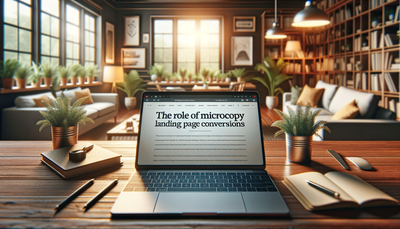The Complete Guide to Website Accessibility for SEO and User Experience
Website accessibility is a crucial aspect of modern web design and development, affecting both search engine optimization (SEO) and user experience. This comprehensive guide explores the importance of making websites accessible to all users, including those with disabilities. We'll delve into the Web Content Accessibility Guidelines (WCAG), discuss implementation techniques, and introduce tools to enhance your website's accessibility. By improving accessibility, you not only comply with legal requirements but also boost your site's SEO performance and provide a better experience for all visitors. This article will equip you with the knowledge and resources needed to create an inclusive online presence that benefits both your audience and your business.Table of Contents:

Understanding Website Accessibility
Website accessibility refers to the practice of designing and developing websites that can be used by everyone, including people with disabilities. This includes visual, auditory, motor, and cognitive impairments. Accessible websites are designed to be perceivable, operable, understandable, and robust for all users, regardless of their abilities or the devices they use to access the internet.Implementing accessibility features not only helps users with disabilities but also improves the overall user experience for all visitors. For example, clear navigation and well-structured content benefit everyone, while features like keyboard navigation and alternative text for images assist users with specific needs while also enhancing SEO.
Do you need a website? Want to build a website but don't know where to start? Our website builder is the perfect solution. Easy to use, and with the ability to customize to fit your business needs, you can have a professional website in no time.
The Impact of Accessibility on SEO
Website accessibility and SEO are closely intertwined, with many accessibility practices directly benefiting search engine optimization efforts. Search engines favor websites that provide a positive user experience, and accessibility is a key factor in achieving this. Some ways accessibility impacts SEO include:1. Improved crawlability: Accessible websites often have cleaner code and better structure, making it easier for search engines to crawl and index content.
2. Enhanced user engagement: Accessible sites tend to have lower bounce rates and higher time-on-site metrics, signaling quality content to search engines.
3. Mobile-friendliness: Many accessibility features align with mobile-first design principles, which is a crucial ranking factor.
4. Broader audience reach: By catering to users with disabilities, you expand your potential audience and increase organic traffic opportunities.
Introduction to WCAG Guidelines
The Web Content Accessibility Guidelines (WCAG) are the most widely recognized standards for web accessibility. Developed by the World Wide Web Consortium (W3C), these guidelines provide a framework for creating accessible web content. WCAG is organized into three levels of conformance: A (lowest), AA, and AAA (highest).The guidelines are based on four main principles:
1. Perceivable: Information and user interface components must be presentable to users in ways they can perceive.
2. Operable: User interface components and navigation must be operable.
3. Understandable: Information and the operation of the user interface must be understandable.
4. Robust: Content must be robust enough that it can be interpreted reliably by a wide variety of user agents, including assistive technologies.
Familiarizing yourself with these guidelines is essential for implementing effective accessibility measures on your website.
Building a website with SITE123 is easy
Key Accessibility Implementation Techniques
Implementing accessibility on your website involves various techniques across different aspects of web design and development. Some key areas to focus on include:1. Semantic HTML: Use proper HTML elements to structure your content, making it easier for assistive technologies to interpret.
2. Alternative text: Provide descriptive alt text for images to assist users with visual impairments.
3. Keyboard navigation: Ensure all interactive elements are accessible via keyboard input.
4. Color contrast: Use sufficient color contrast ratios to improve readability for users with visual impairments.
5. Accessible forms: Design forms with clear labels, error messages, and keyboard-friendly input fields.
6. Proper heading structure: Use heading tags (H1-H6) to create a logical content hierarchy.
7. Responsive design: Ensure your website is usable across various devices and screen sizes.
8. Captions and transcripts: Provide text alternatives for audio and video content.
Tools for Improving Website Accessibility
Numerous tools are available to help you assess and improve your website's accessibility. Some popular options include:1. WAVE (Web Accessibility Evaluation Tool): A free browser extension that provides visual feedback about accessibility issues on web pages.
2. axe DevTools: A browser extension that helps developers find and fix accessibility issues during the development process.
3. Lighthouse: An open-source tool by Google that audits web pages for performance, accessibility, and more.
4. Color Contrast Analyzer: A tool to check if your color combinations meet WCAG contrast ratio requirements.
5. Screen readers: Tools like NVDA (for Windows) or VoiceOver (for Mac) allow you to experience your website as visually impaired users would.
Regularly using these tools can help you identify and address accessibility issues on your website, improving both user experience and SEO performance.
Legal Considerations and Benefits
Website accessibility is not just a best practice; it's often a legal requirement. Many countries have laws mandating that websites, especially those of government agencies and businesses, be accessible to people with disabilities. In the United States, for example, the Americans with Disabilities Act (ADA) has been interpreted to apply to websites, leading to numerous lawsuits against non-compliant businesses.Beyond legal compliance, prioritizing accessibility offers numerous benefits:
1. Expanded audience reach
2. Improved brand reputation
3. Enhanced user experience for all visitors
4. Better SEO performance
5. Increased customer satisfaction and loyalty
By investing in accessibility, you not only mitigate legal risks but also create a more inclusive and successful online presence.





